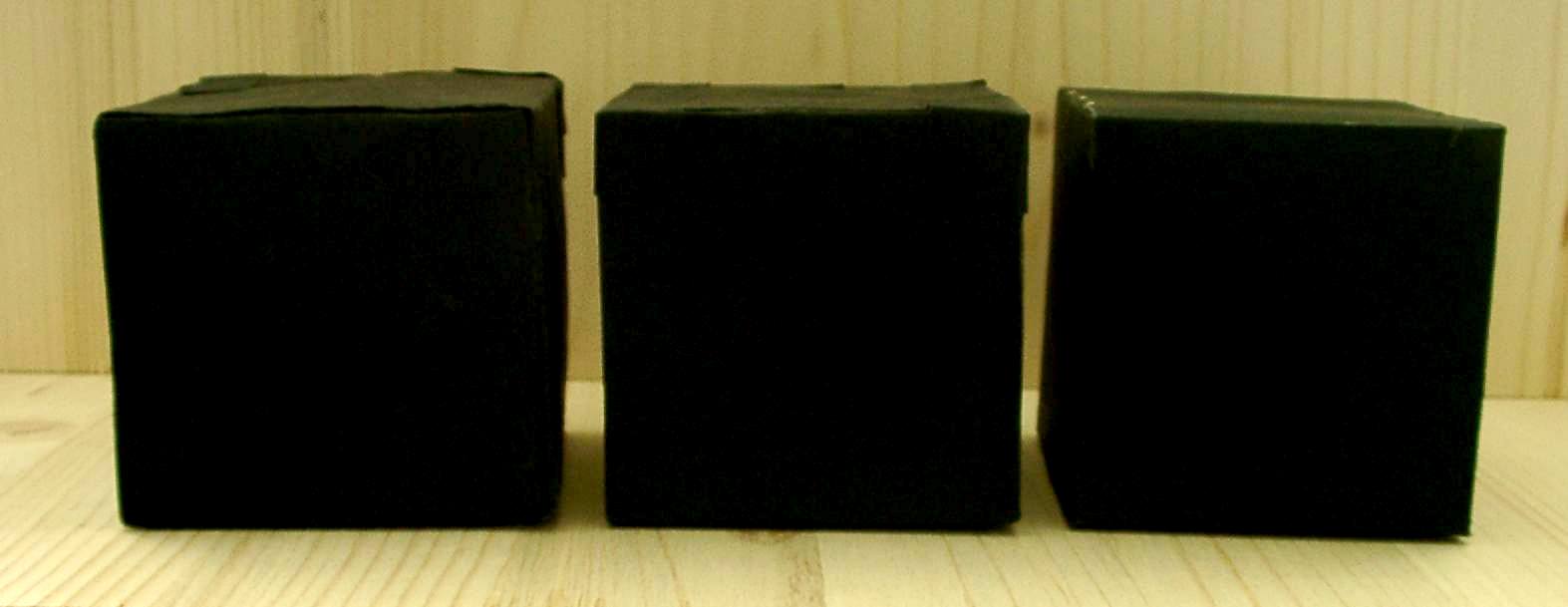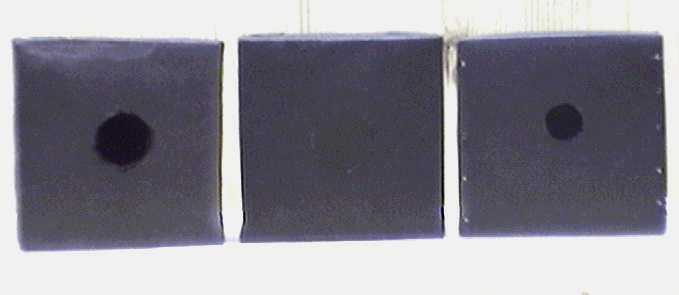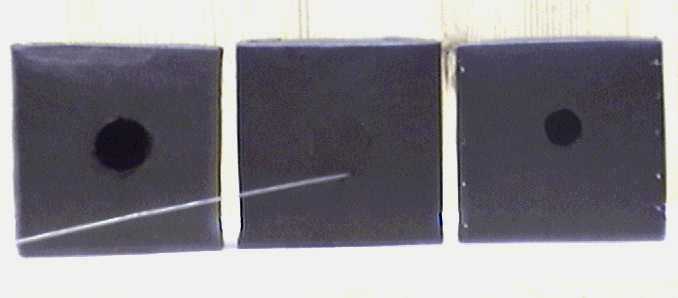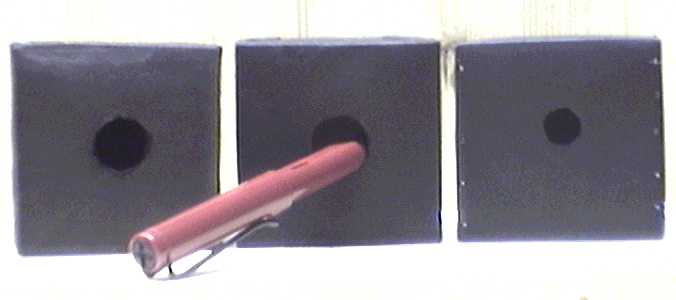|
The left cube only consists of black carton, inside as well as outside. The insides of the other cubes are covered with white paper as you can see on the picture above.
A hollow cube absorbs much light through an aperture, maybe yet more than its black outer surface does. Even a cube with white insides may absorb just as much light as its black surface. This depends on the ratio between the opening area and the hollow space behind it. The aperture of the cube in the middle and the surface showed the same absorption rate. If the aperture becomes smaller (by any means) it will look blacker, i.e. the absorption rate inceases.
The opening of an inside black coloured hollow absorbes more light than the "normal-black" surface of any object!
But wait - we are not yet at the end of our mistery! The "hole" as a black coloured body not only absorbes more light than the surface of a massive black body, it even emits more light than the surface does! Unbelievable!
The light emitted by the aperture of a hollow is usually not visible for our human eyes. However, if the hollow space is heated strongly until it shows red glow, the phenomena will change. But -- how to make a carton glow red??
Well, you perhaps might enjoy to click on "The Black Emitter" in the navigation frame above?
|




